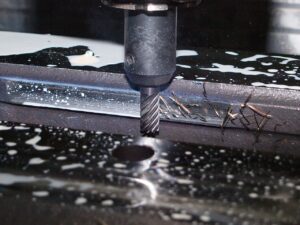When it comes to achieving precision and efficiency in high-performance machining, selecting the right tool is crucial. One such indispensable tool is the tungsten carbide end mill. Designed specifically for challenging applications, the tungsten carbide end mill offers unmatched durability and cutting performance. In this article, we will explore the key factors to consider before purchasing a tungsten carbide end mill, enabling you to make an informed decision for your machining needs.
1. Material Compatibility:
One of the primary considerations when selecting a tungsten carbide end mill is its compatibility with the material you will be machining. Different materials require specific tool geometries, coatings, and cutting parameters for optimal results. For example, when machining stainless steel, a high-speed steel (HSS) end mill may wear out quickly, while a specialized tungsten carbide end mill with a TiCN coating will provide superior performance and extended tool life.
2. Cutting Speed and Feed Rate:
To achieve high-performance machining, it is vital to select a tungsten carbide end mill that can handle the desired cutting speed and feed rate. These parameters depend on the material hardness and the depth of cut you intend to achieve. For instance, when machining aluminum, a high-speed cutting strategy combined with a diamond-coated tungsten carbide end mill will allow for faster material removal while preventing chip welding.
3. Flute Configuration and Helix Angle:
The flute configuration and helix angle of the tungsten carbide end mill greatly influence its chip evacuation capabilities, rigidity, and cutting performance. For deep pocket milling, a 2-flute end mill with a high helix angle promotes efficient chip removal and reduces the risk of tool deflection. Conversely, when machining materials prone to chip recutting, such as cast iron, a 4-flute end mill with a lower helix angle provides better chip control and improved surface finish.
4. Coating Selection:
The choice of coating plays a vital role in maximizing the lifespan and effectiveness of a tungsten carbide end mill. Common coating options include TiCN, TiAlN, and TiN. Each coating exhibits specific properties such as hardness, lubricity, and heat resistance. Therefore, selecting the right coating is crucial for optimal performance and extended tool life in high-performance machining applications.
5. Tool Stability and Rigidity:
In high-performance machining, stability and rigidity are pivotal for accurate and efficient cutting. The design of the tungsten carbide end mill, including its shank diameter, flute length, and core diameter, affects its ability to resist vibration and prevent tool deflection. For instance, a carbide end mill with a long core diameter and sufficient flute length will maintain tool rigidity, ensuring precise cutting even in demanding applications.
Choosing the best tungsten carbide end mill for high-performance machining requires careful consideration of material compatibility, cutting speed, flute configuration, coating selection, and tool stability. By prioritizing these factors, you can significantly enhance your machining capabilities while achieving optimal results.
